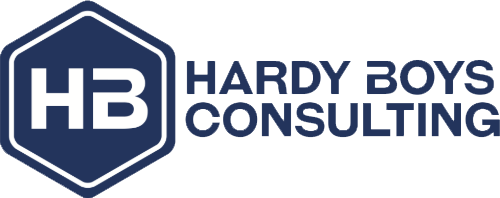A brand ambassador program shouldn’t be limited to social media. Some of the best brand ambassador programs I’ve seen are built from the inside out. I’ve always been a firm believer that if your employees and board members have a hard time articulating your brand consistently, chances are, your audience will experience brand confusion. Employees and board members make GREAT brand ambassadors when they have a solid understanding of the brand and access to the tools and resources needed to deliver an exceptional brand experience to existing and prospective clients.
Internal branding is a business strategy measure to enable and motivate employees to keep the brand promise and “live” it. The “internal brand” and the “external brand” must relate to one another. A brand is successfully rooted in the company when all employees understand it and act accordingly.
What is a brand ambassador?
Brand ambassadors are simply people who represent and positively talk about your organization. They embody the brand they are endorsing. They provide credible, trustworthy promotion and visibility to a brand.
Why are brand ambassadors important?
People like to buy from people. While organizations traditionally brand themselves through logos and symbols, partnerships, community involvement, and outreach, social media offers an opportunity to do more. Brand ambassadors are emotionally engaged with your organization’s brand promise, and they espouse the brand value we promise to deliver.
Who can be a brand ambassador?
Any employee, board member, or volunteer from your organization can serve as a brand ambassador. Effective brand ambassadors are those who have a solid understanding of your business objectives and brand strategy.
There are numerous ways that brand ambassadors can impact your organization beyond social media:
- Executive team: VIP relationships, partnerships, industry thought leadership.
- Charitable: Grant and fundraising opportunities, donor relationships, donor pipeline.
- Community programs: Outreach, community involvement, workshops.
- Marketing: Lead generation, brand awareness, social shares, web traffic.
- Lending: Partnerships, new opportunity creation, increase revenue, and lead pipeline.
- Recruiting: Increase recruiting and retention, improved talent pool, build your employer brand.
- Products and services: When employees and board members believe in the products, services, and programs they deliver and the company offers, they naturally recommend and talk about them outside of the workplace.
Employees who regularly communicate with people outside your organization often have the most extensive professional networks and are crucial to driving results.
A brand ambassador program takes advantage of the loyalty of your existing clients/customers and creates a sense of community between your business and your biggest fans.
“The most successful brand ambassador programs grow from the bottom-up versus top-down.”
Benefits of a employee and board brand ambassador program
While any employee or board member will have a perceived bias for your organization’s products, programs, and services, brand ambassadors from outside sales and marketing teams will come across as more genuine with an authentic point of view. When employees and board members endorse a product and personally vouch for your company, it validates your brand.
Developing effective brand ambassadors
- Define the brand and what sets our brand apart.
- Mission
- Vision
- Values
- Brand personality
- Hold employee meetings or a series of team meetings to share the brand definition and what it means to be a part of your organization.
- Review the importance of employee/board support in the long-term success of your organization.
- Empower your brand ambassadors by letting them know that their actions positively or negatively impact your current customers and future customers.
- Continue to educate, remind, and encourage brand ambassadors.
- Have a solid onboarding program so brand ambassadors have a comprehensive understanding of the internal resources, tools, and training available to them. The more they understand your brand, the better they can deliver a personalized brand experience.
- Provide regular updates on content, products, programs, services with best practices for communicating them to prospective customers.
- Train them to have the ability to pick up on cues that allow for cross-selling.
- If an employee or board member leaves the organization, off board them so they leave as an alumnus who will continue to speak highly of and recommend your organization.
Best practices for launching an internal brand ambassador program
- Check the pulse of employee and board engagement—disengaged employees, are not optimal ambassadors for your brand story. Lack of motivation will prevent success.
- Have a mission, vision, and values a brand ambassador can get behind. They give each employee something concrete to measure their actions against besides the bottom line. This makes your message more resonant when your brand ambassadors reach out.
- Identify a core team of engaged employees to pilot a brand ambassador program who can later serve as coaches and mentors to “grow” other brand ambassadors.
- Regardless of title or role, natural leaders can be instrumental in getting an effective brand ambassador program up and running.
- Don’t force it—allow employee and board members to take on only what feels like a natural fit.
- Feeling like you’re part of something is one of the most vital parts of being a brand ambassador. Help them live that feeling by providing recognition, encouragement, and a little bit of company swag.
